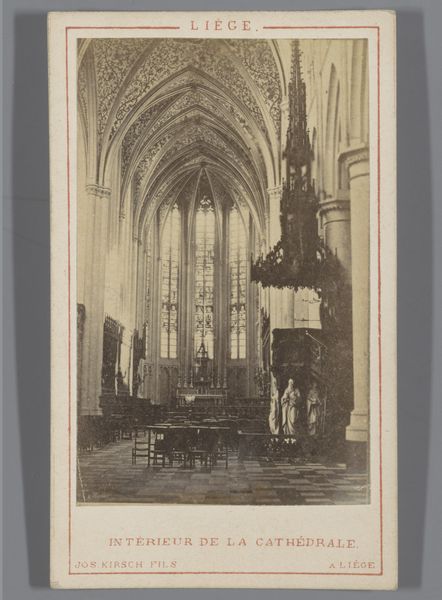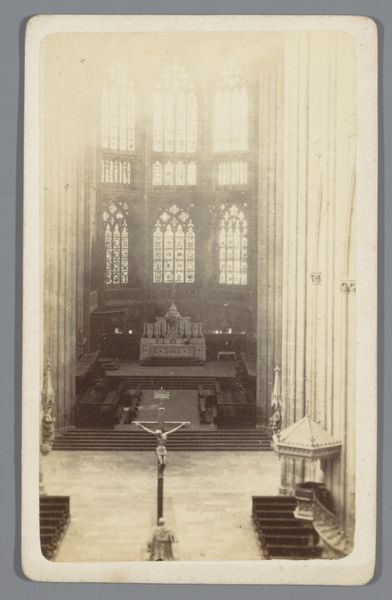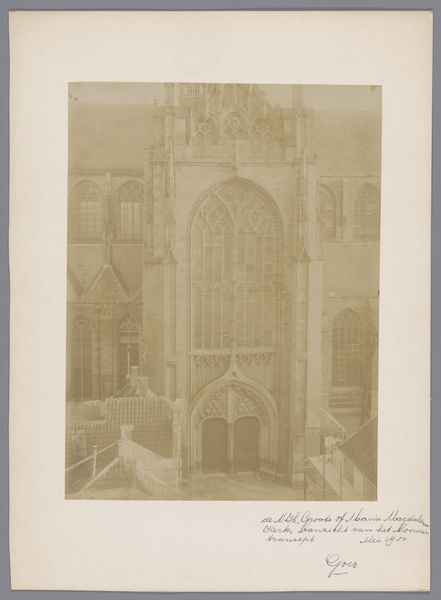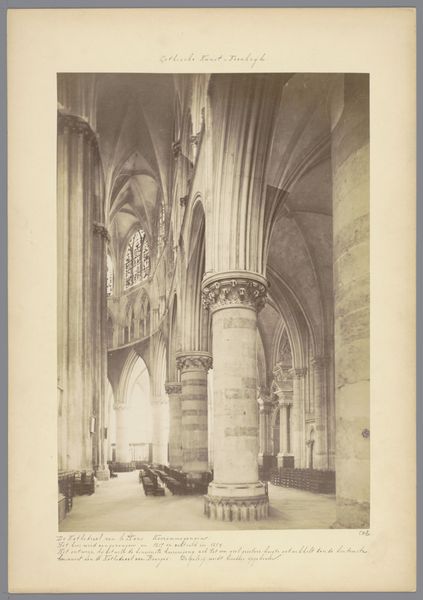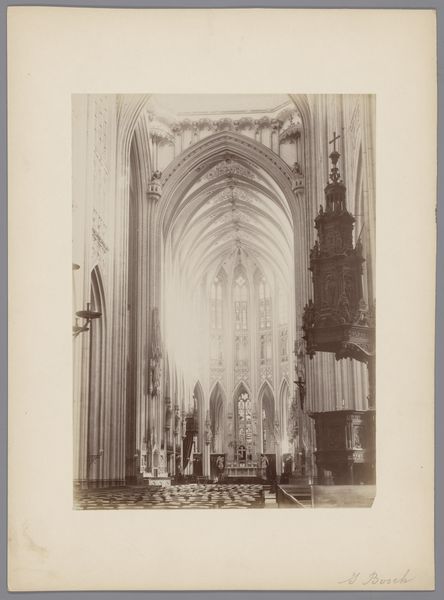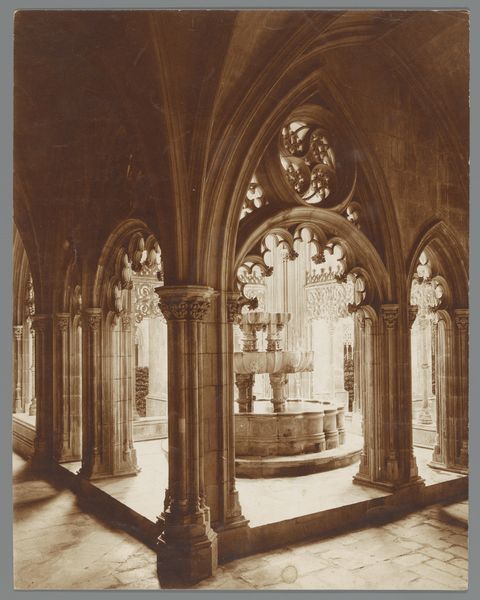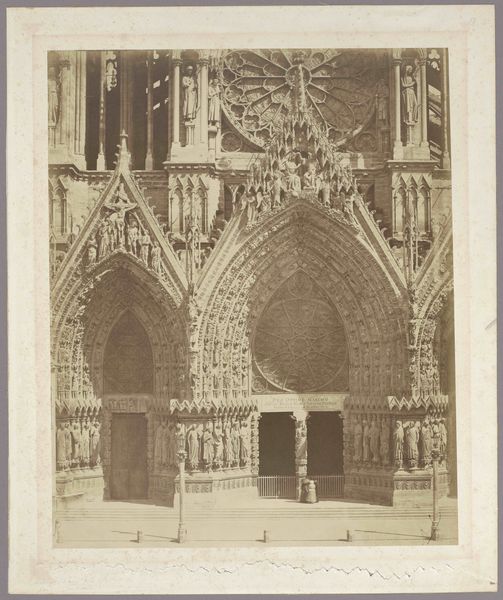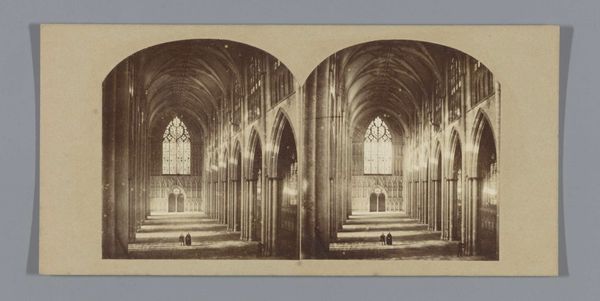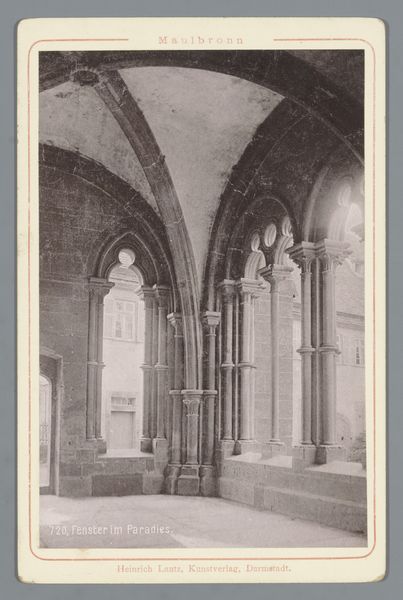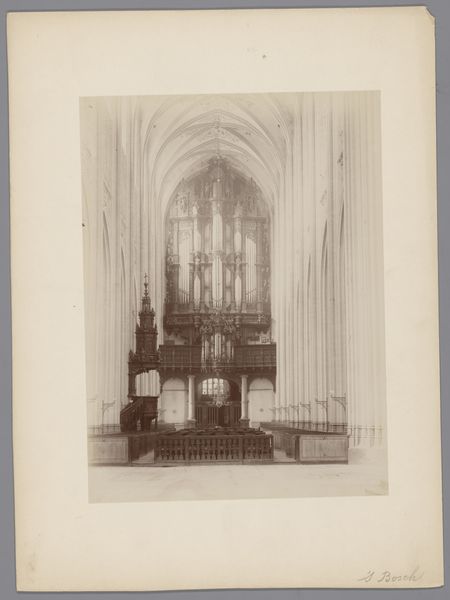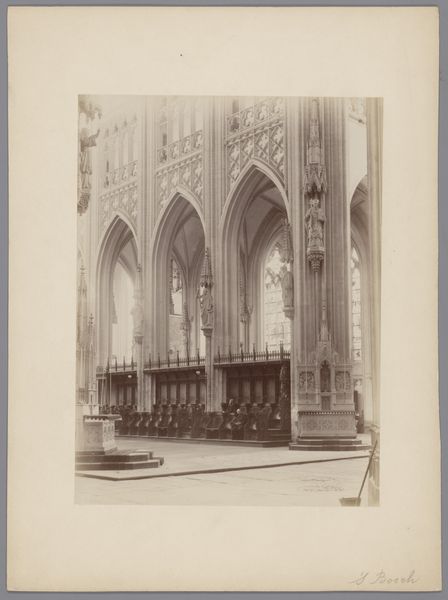
Dimensions: height 104 mm, width 67 mm
Copyright: Rijks Museum: Open Domain
Curator: This is "Sainte Chapelle, Paris," a gelatin-silver print created by Jules Valecke sometime between 1870 and 1900. The artist beautifully captures the Gothic style that characterizes this famous chapel. Editor: Immediately, I am struck by the contrast. The delicate, almost lace-like structure of the chapel feels simultaneously ethereal and heavy, the monochromatic rendering emphasizing its geometric complexity. Curator: Indeed, Valecke masterfully uses light and shadow to accentuate the intricate rib vaulting and the tall stained-glass windows, hallmarks of Gothic architecture. Note the upward-reaching lines, visually pulling the eye toward the heavens. The composition, tightly framed, seems to contain the holy within. Editor: And I can’t help but consider the political dimensions. Built during the reign of Louis IX, Sainte-Chapelle housed holy relics, solidifying royal power through a sacred claim. Valecke's image arrives amid a period of nation-building and the rise of photography as a mode of both documentation and idealization of national heritage sites. Who was this image intended to serve? What narrative does it create? Curator: The print embodies a controlled geometry, echoing a pursuit of harmony and divine order. It is a delicate interplay of line, form, and texture. Editor: The image speaks, in a broader context, to ideas of cultural and religious supremacy, and the very real impact of structures like this in defining social power for centuries. It's a visual manifestation of complex historical dynamics and colonialist entanglements. Curator: One might find pleasure in its formal elegance and Valecke’s remarkable handling of light to produce depth and texture. It prompts a renewed attention to spatial dynamics within a historical monument. Editor: Understanding the layered implications that architecture, image-making, and representation carry can teach us a great deal about the continued presence of structural power dynamics and enduring legacies within art. Curator: Absolutely. The strength of this piece lies in its careful distillation of architectural form. Editor: And that distillation enables us to excavate historical power structures with greater clarity.
Comments
No comments
Be the first to comment and join the conversation on the ultimate creative platform.
